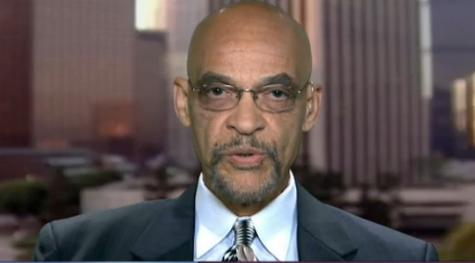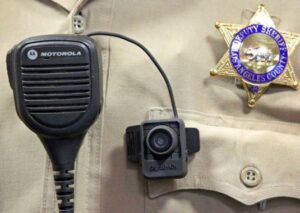Earl Ofari Hutchinson
The timely public release by the Los Angeles County Sheriff’s Department of the body cam footage of the slaying of Niani Finlayson was widely held as a great step toward transparency in dubious police shootings. Finlayson was a young African American mother in Lancaster, California who called for police help following a domestic violence disturbance. Deputies responded and said that she was slain after she threatened them with a knife.
Her slaying again called into serious question the use of deadly force by cops. That’s why this writer publicly demanded the prompt release by the department of the video footage of the killing. Then previewed the footage at the sheriff’s department immediately before its public release. The hope was that the footage would determine conclusively the truth about the Finlayson slaying. It didn’t.
The harsh reality is that body cams have done little to curb police violence. Police killings hit a record high in 2022. Despite the widespread public impression that most departments now require body cams on officers. Only a handful of states require their use. Most police departments still don’t release them instantly or on a timely basis.
The presumption has always been that when cops know they are being filmed and their actions documented this will make them far less inclined to be quick on the trigger or in the use of their fists, or hammer locks.
This hasn’t been the case. There’s far more to the use of body cams than just simply clamping one on the lapel or collar of an officer. There’s the matter of what a body cam can and can’t do, or even should be expected to do. Contrary to widespread belief, only a minuscule number of police-citizen encounters involve the use of force. Only a small fraction of police calls involve felony stops or arrests.
A body camera has little practical value here. Its main function then is to document encounters that involve the potential use of force. That is to provide a neutral, objective picture of what went on during that encounter, to avoid the almost certain — he said, she said — about how and why a use of force tragedy happened. But that may not be the case.
The footage of the Finlayson slaying was a perfect example. It was relatively short time wise. There was much confused movement and action during the encounter. The camera didn’t give a clear picture of what Finlayson did or didn’t do that allegedly posed such a threat that deadly force was required.
In the trials of other police officers since the Rodney King beating case in 1991 who have been charged with the overuse of force in which there was videotape evidence that appeared to show the officer did commit the acts, their defense attorneys have argued that the camera captured only part of the picture, not the whole picture.
A body camera has a similar hitch, in this case, technologically. It records only what’s in front of the officer. If the officer turns his body, is walking or running, and there are different angles in the encounter, it won’t give an accurate picture of the full encounter.
There’s a couple of other fail-safe hitches that render the use of body cams questionable, if not almost worthless in reducing police violence. The sheriff’s deputies that confronted Finlayson wore body cams, had them turned on, and knew they were being filmed. There was no effort by police officials to drag their feet on timely release, and certainly not doctor the footage.
Yet, the officers still may have over-used deadly force in the encounter acted with Finlayson. There had to be a level of confidence on their part that the footage alone of their actions would not get them into hot water with the department’s higher ups. There had to be the same level of confidence that the protective culture of policing and the ingrained belief among much of the public that police must be given the benefit of the doubt in controversial or dubious actions toward civilians would shield them.
Prosecution of police officers that use excessive force, are still extremely rare. That includes many of the officers who commit their questionable acts while outfitted with body cams.
Many police departments that require body cams have not made clear how the footage of the actions of the officers that are equipped with them will be used or released. This remains a discretionary judgment call police official’s make when there is a controversial use of force encounter and the officer involved in the encounter is wearing the body cam. These questions come into play: Did it show all? Was there more? How will the action be interpreted? And who will decide on the merit of the interpretation?
The L. A. County Sheriff’s Department has publicly pledged accountability and transparency. It certainly does not want the nightmare of having to endlessly defend their department from the charges of excessive force. But from the evidence to date, body cams have done little to stop that from happening. That was tragically true with Finlayson.
Earl Ofari Hutchinson is an author and political analyst. He is the host of the weekly Earl Ofari Hutchinson Show on Pacifica Radio-KPFK Los Angeles 90.7 FM Los Angeles and publisher of the hutchinsonreport.net

